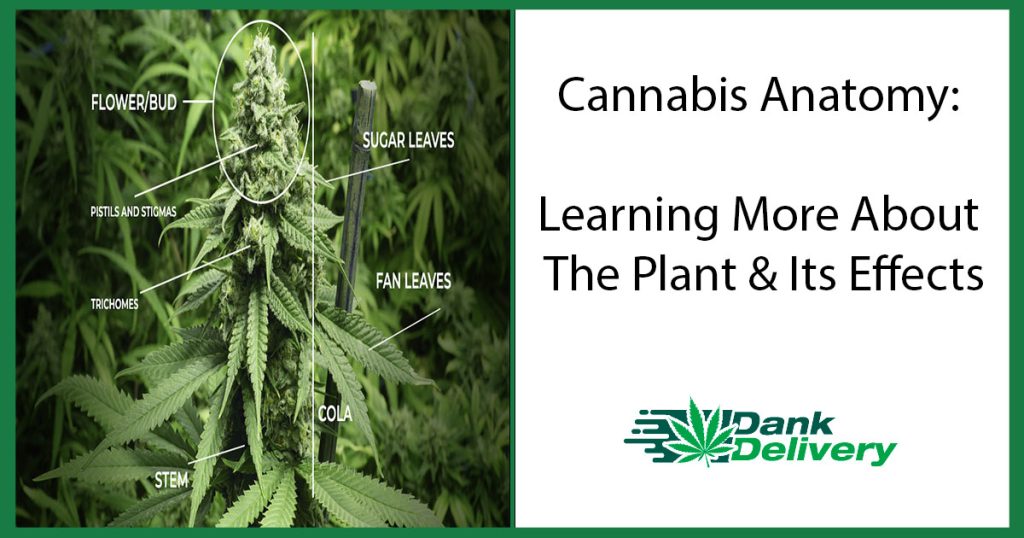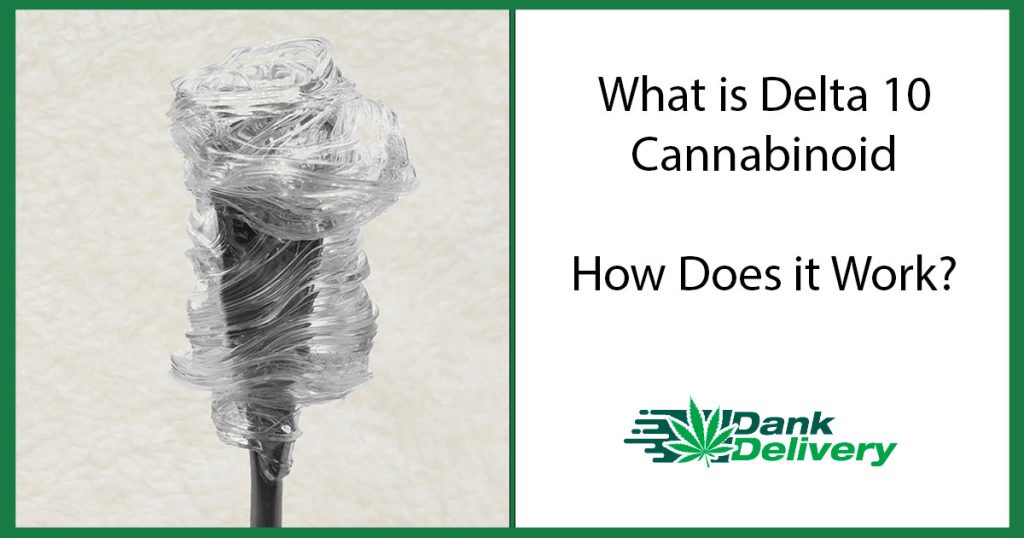| Outline | |
|---|---|
| 1. Introduction | |
| 2. The Cannabis Plant: A Brief Overview | |
| 2.1. Sativa vs. Indica vs. Hybrid | |
| 3. Cannabis Anatomy | |
| 3.1. Trichomes | |
| 3.2. Cola | |
| 3.3. Calyx | |
| 3.4. Pistil | |
| 3.5. Stigma | |
| 3.6. Node | |
| 3.7. Fan Leaves | |
| 4. The Compounds Found in Cannabis | |
| 4.1. Cannabinoids | |
| 4.1.1. THC | |
| 4.1.2. CBD | |
| 4.2. Terpenes | |
| 5. The Effects of Cannabis | |
| 5.1. Therapeutic Effects | |
| 5.2. Adverse Effects | |
| 6. Conclusion | |
| 7. FAQs |
Demystifying Cannabis: Understanding The Plant And Its Impact
1. Introduction
As cannabis legalization expands and knowledge of its benefits and properties grows, understanding the anatomy of the plant and its effects becomes increasingly important. In this article, we’ll dive into the fascinating world of cannabis anatomy, explore the different parts of the plant, discuss the compounds found within it, and examine the therapeutic and adverse effects of consuming cannabis.
2. The Cannabis Plant: A Brief Overview
Cannabis is a genus of flowering plants in the Cannabaceae family. The three primary species of cannabis are Cannabis sativa, Cannabis indica, and Cannabis ruderalis. The latter is less common and is mainly used for industrial purposes. It’s crucial to know the differences between these species as each has unique characteristics and effects.
2.1. Sativa vs. Indica vs. Hybrid
Sativa strains tend to have higher THC content, producing uplifting, energetic effects. They usually have thin, tall leaves and a longer flowering time. In contrast, Indica strains have higher CBD content, providing more relaxing and sedative effects. They have broader leaves and a shorter flowering time. Hybrids are a crossbreed of both species, combining the characteristics and effects of both Sativa and Indica.
3. Cannabis Anatomy
In this section, we’ll break down the anatomy of the cannabis plant and explain the function of each part.
3.1. Trichomes
Trichomes are tiny, hair-like structures that cover the cannabis plant. They contain the majority of the cannabinoids, terpenes, and flavonoids that contribute to the plant’s effects. Trichomes play a crucial role in the plant’s defense against pests and environmental stressors.
3.2. Cola
The cola refers to the cluster of buds that grow tightly together at the top of the cannabis plant. The buds contain the highest concentration of cannabinoids and terpenes, making them the most potent part of the plant.
3.3. Calyx
The calyx is the small, protective structure that encloses the plant’s reproductive organs, including the pistil and stigma. The calyx is an essential part of the cannabis flower, as it helps protect the plant’s developing seeds.
3.4. Pistil
The pistil is the female reproductive organ of the cannabis plant, consisting of the ovary, style, and stigma. The pistil’s primary function is to receive pollen from male plants and produce seeds.
3.5. Stigma
The stigma is the hair-like structure that extends from the
pistil, responsible for collecting pollen from male cannabis plants. When pollinated, the plant will produce seeds for the next generation of plants.
3.6. Node
Nodes are the points along the cannabis plant’s stem where branches, leaves, and buds emerge. These are important for the plant’s growth, as they provide the necessary support for branches and allow for optimal light exposure.
3.7. Fan Leaves
Fan leaves are the large, iconic leaves that give the cannabis plant its recognizable appearance. They play a crucial role in photosynthesis, providing the energy needed for the plant to grow and produce flowers.
4. The Compounds Found in Cannabis
Cannabis contains a vast array of chemical compounds that contribute to its effects. These compounds can be grouped into three main categories: cannabinoids, terpenes, and flavonoids.
4.1. Cannabinoids
Cannabinoids are the primary active compounds found in cannabis. They interact with the body’s endocannabinoid system, producing various effects. The two most well-known cannabinoids are THC and CBD.
4.1.1. THC
Tetrahydrocannabinol (THC) is the psychoactive compound responsible for the plant’s mind-altering effects. It binds to cannabinoid receptors in the brain, leading to sensations of euphoria, relaxation, and, in some cases, heightened senses and creativity.
4.1.2. CBD
Cannabidiol (CBD) is a non-psychoactive cannabinoid known for its potential therapeutic properties. It has been studied for its potential to alleviate symptoms related to anxiety, inflammation, pain, and more. CBD has gained popularity for its ability to provide many of the benefits of cannabis without the intoxicating effects of THC.
4.2. Terpenes
Terpenes are aromatic compounds found in cannabis and many other plants. They contribute to the plant’s unique scent and flavor profile. Terpenes also have potential therapeutic effects and can synergize with cannabinoids to enhance their benefits, a phenomenon known as the “entourage effect.”
5. The Effects of Cannabis
Cannabis affects each individual differently, depending on factors such as the specific strain, the method of consumption, and the individual’s tolerance. Generally, cannabis can produce both therapeutic and adverse effects.
5.1. Therapeutic Effects
Cannabis has been used for centuries for its potential therapeutic properties. Some of its most common therapeutic effects include:
- Pain relief
- Reduction of inflammation
- Relief from anxiety and stress
- Improved sleep quality
- Enhanced appetite
- Relief from muscle spasms and seizures
5.2. Adverse Effects
While cannabis can provide numerous benefits, it can also produce some adverse effects, particularly when consumed in high doses or by inexperienced users. Some common adverse effects include:
- Dry mouth
- Red eyes
- Dizziness
- Anxiety or paranoia
- Short-term memory impairment
- Increased heart rate
6. Conclusion
Cannabis is a complex and fascinating plant with a rich history and diverse effects. Understanding its anatomy and the compounds within it can help you appreciate the plant and make more informed choices about consumption. As cannabis continues to gain mainstream acceptance and legality, further research and education will only serve to deepen our understanding of this remarkable plant.
7. FAQs
- What are the main differences between Sativa and Indica strains?
Sativa strains typically have higher THC content and produce more uplifting, energetic effects, while Indica strains have higher CBD content and provide more relaxing, sedative effects. - What are trichomes and why are they important?
Trichomes are tiny, hair-like structures that cover the cannabis plant and contain the majority of the cannabinoids, terpenes, and flavonoids. They play a crucial role in the plant’s defense against pests and environmental stressors, and they contribute significantly to the plant’s effects. - What is the entourage effect?
The entourage effect is a phenomenon where the various compounds found in cannabis, such as cannabinoids and terpenes, work together synergistically to enhance their individual effects and benefits. - Can CBD provide therapeutic benefits without the psychoactive effects of THC?
Yes, CBD is a non-psychoactive cannabinoid that has been studied for its potential to alleviate symptoms related to anxiety, inflammation, pain, and more. It provides many of the benefits of cannabis without the intoxicating effects of THC. - What factors can influence the effects of cannabis?
Factors that can influence the effects of cannabis include the specific strain, the method of consumption, the individual’s tolerance, and the presence of other compounds such as terpenes and flavonoids.



